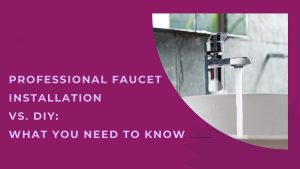Custom pet-specific furniture may be the best deal for some pet owners who have all the zeal and passion to assemble pet furniture for their furry, feathered, or scaly pets. Every pet is different; they have different characteristics, and therefore, the selection of furniture for them is a matter of paramount importance. In this guide, so as to properly design a comfortable and safe resting place for the pet, it will be necessary to know how to build pet furniture for different animals.
Cat Furniture Assembly
Cats mostly love playing with any object that has a scope for climbing and scratching. Some cat furniture is intended to address these instincts; it comprises such items as cat trees, scratching posts, and cat condos, among others. Assembling pet furniture is surely a daunting task, but don’t worry! Here’s how to assemble common types of cat furniture:
Start with a solid base: First of all, the construction of the base must be done, having screwed all the screws and bolts to the extent possible. Lack of stability from the base of the furniture makes the cat likely to find it wobbly, and this may discourage them from using it.
Assemble vertical posts: Screw the vertical supports on the base. One of these posts often acts as a scratcher and is normally fitted with sisal rope or carpet. Fix the posts firmly to avoid their chances of toppling over.
Add platforms and condos: Next, construction of the platforms and condos has to be done. This is where your cat will sit, lie down, and even seek comfort inside. These should be well plumbed and well fixed to the floor because the cats may climb over them.
Attach toys and accessories: Some of the cat trees feature added toys that hang from the product or other accessories. Fit these as directed so that they are securely mounted and do not contain parts that may be ingested by the child.
Final inspection: After the construction, make sure all the parts are firmly locked in and the structure is stable enough. Put the furniture in a spot that makes your cat comfortable.
Dog Furniture Assembly
Dog furniture includes the beds and crates, as well as the ramps and steps that enable senior dogs to climb up on furniture. Here’s how to assemble various types of dog furniture:
Choose the right tools: Dog furniture may or may not entail the use of complex tools such as a screwdriver, a wrench, or an Allen key, among others. Collect these tools before anything.
Follow manufacturer instructions: When it comes to creating a dog bed, crate, or even a ramp, the most important thing to do is to follow the manufacturers’ guidelines. Disperse all the components and see the various parts from the manual to avoid chances of confusion.
Assemble the frame first: Regarding pieces such as dog crates or beds with frames, the first step should be to fix the frame. Check if all joints and connections are properly secured since dogs are known to be rather ‘rough’ furniture.
Add cushions or mattresses: Adding cushions, mattresses, or any padding must be done after the frame of furniture is already set. Make sure that they cover the areas tightly and are secure.
Test for stability: Before allowing your dog, for instance, to sit and lie on furniture you have bought, you should first check if it can hold up to the weight of your dog. Tilt the structure from side to side and press on it to check its sturdiness.
Safety check: Also, be careful of any sharp edges or protruding screws that might harm your dog. Round out these or encase them for security reasons.
Small Animal Furniture Assembly
Some pets include rabbits, guinea pigs, hamsters, and other small animals, and the furniture designed for them should reflect their size and their requirements. This can include hideouts, tunnels, and climbing structures.
Use non-toxic materials: When putting up small animal furniture, it is advisable to do it in such a way that the items used have no toxic effects on the animals. Pets usually chew furniture and, hence, should not be taken near materials that are harmful to small animals.
Create a secure environment: Complete a proper substructure or framework. Small animals require protection in a way that they cannot flee or get hurt by other animals or trappings.
Add levels and hideouts: In small animal furniture, it is common to have many shelves or hideouts in the structure itself. Screw these in as provided, depending on where you want them to be placed, and make sure you make them easily reachable and secure for your pet.
Incorporate enrichment items: small animals should be provided with tunnels, chew toys, or climbers. Make sure they are tightly fastened and of the right size for your companion animal.
Safety and cleanliness: After the assembly is complete, look for little parts or gaps that your pet may possibly get stuck in. The furniture should be easy to clean since these animals need a clean environment at all times.
Bird Furniture Assembly
Select bird-safe materials: It should also be ascertained that none of the material used on furniture is hazardous to the health of birds. Do not use poisonous wood or covers that are dangerous to the life of your pet.
Assemble the frame: Begin by checking on the main frame and making sure the joints are very well-tightened. Birds fly, crawl, and like to explore; therefore, the furniture that is to be placed should be strong enough to bear the weight.
Add perches and toys: This is so because, when designing the bird’s cage, one is supposed to attach perches, swings, and toys to the main structure. For this reason, make sure that they are installed at the right height and that they are firmly set in place.
Test for stability: After you release your bird on the furniture, you should move the furniture slightly to see if the bird is steady. Check that it has enough capacity to safely hold your bird’s weight without toppling or crashing to the ground.
Reptile Furniture Assembly
Reptile furniture consists of provisions such as platforms on which reptiles can bask or climb, hiding spots, and climbing toys, which are fundamental if the environment is to mimic the natural one.
Use safe materials: They are sensitive to their surroundings; therefore, use furniture that has been extracted from non-hazardous materials.
Start with the habitat layout: Prioritize how the furniture is going to be arranged to create the habitat for your reptile before buying it.
Assemble hides and platforms: Secure hides and platforms and make sure that they are placed appropriately where your reptile can comfortably move in and out and also move around with ease.
Incorporate climbing structures: A number of reptiles are climbers. Providing opportunities for climbing is another factor that makes it possible to fix branches, logs, or artificial vines.
Check for stability and safety: Check the furniture you fix in for sharp parts, protruding bolts, or anything else that can hurt your reptile. Make sure that everything is tightly screwed and cannot move when your pet jumps on it.
Monitor and adjust: After the makeup furniture is set, observe the reaction of your reptile. Modify as necessary to make them comfortable and easy to manage while in use, as well as safe.
Maintaining Cleanliness
To keep your pet furniture in top condition, it’s important to also consider the cleanliness of your home. For instance, if your furniture is placed on ceramic tile flooring, knowing how to clean ceramic tile will help you maintain a hygienic environment for your pets. Proper cleaning techniques can prevent the build-up of dirt and grime, ensuring both your furniture and floors stay in great shape.






